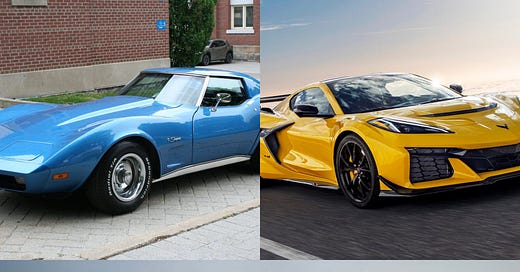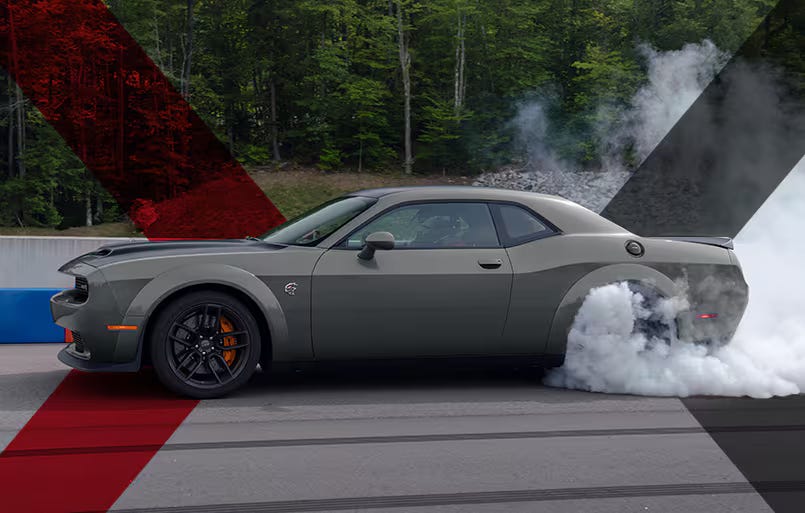How Much Horsepower Do We Really Need?
Why 300 HP Is All You Need (But 1,000 Is Fun to Brag About)
Ah, the modern sports car—where every new model seems to pack enough power to launch a satellite. And here we are, the tinkerers, obsessing over how to make our already impressive cars “more better.” Yes, more better. Grammatically incorrect but stick with me—you know exactly what I mean.
Let’s rewind a bit. Remember the 1970s? Back then, muscle cars were weaklings compared to today’s beasts. A 1975 Corvette had a pitiful 165-205 horsepower. Laughable, right? Now, the upcoming Corvette ZR1 packs a staggering 1,064 hp. And don’t get me started on hypercars like the Rimac Nevera, which clocks in at almost 2,000 hp. It’s bananas! But it raises the question: how much horsepower do we actually need? (Spoiler: it’s way less than you think.)
Bring a Trailer, Chevrolet, Rimac
Big Numbers, Bigger Ego?
For some drivers, it’s all about being the big dog. Picture this: you roll up to a stoplight, grip the wheel, press the throttle, and—BAM—you’ve smoked the competition. It’s fun, sure. But after a few runs, doesn’t it get, well... boring? Straight-line speed is exhilarating, but where’s the finesse? It’s like bringing a bazooka to a water gun fight. Cool for a minute, but eventually, you want a little more game to the game.
And while manufacturers are giving us ridiculous horsepower, they’re also loading up cars with advanced suspension systems to handle the insane torque. Dual-clutch transmissions (DCTs), electronic stability control (ESC), traction control systems (TCS)—they’ve got our backs, keeping us from looking like amateurs (even if we secretly are). Ferrari, McLaren, Porsche—they’ve all added tech wizardry to make even us feel like heroes behind the wheel. But let’s pause for a second to appreciate just how these systems work.
ESC vs. TCS: Keeping You Shiny Side Up
Here’s a quick breakdown of two unsung heroes: ESC and TCS. They’re like guardian angels for your tires and dignity.
ESC (Electronic Stability Control)
Purpose: Prevents skidding and keeps you on your intended path.
How it works: If your car starts sliding (oversteer or understeer), ESC applies brakes to individual wheels or cuts engine power to straighten you out. There is a saying we track rats have, it goes - if you replace the front brake pads more often than the rear brake pads that’s you driving the car well. If you wear out the rear brake pads before the fronts that’s the car saving your butt. Time for lessons.
When it kicks in: Sharp turns, extreme maneuvers, or slippery roads.
TCS (Traction Control System)
Purpose: Stops your wheels from spinning out during hard acceleration.
How it works: If one wheel starts slipping, TCS applies brakes or reduces engine power to restore grip.
When it kicks in: Launching on wet roads or icy surfaces—or when you get too enthusiastic with the throttle. You will feel the throttle go limp (not give full power when you want it).
Both systems are life savers, especially for those who might overestimate their skills (looking at you, Mr. “700hp-but-I-only-drive-on-weekends”). Personally, I leave them on 99% of the time, even on track days. Sure, I’d love a private track session to play with these systems turned off—but only if there’s plenty of runoff space to cushion my mistakes.
Dodge
How Much Horsepower Do You Need?
Back to the question at hand: need vs. want. Some experts say 100-200 hp is all you need. Me? I’d say 300 hp hits the sweet spot. That’s enough to merge onto the highway, pass slower traffic, and have fun on twisty mountain roads. Take the Mazda Miata with its 181 hp—it’s a prime example. How do I know? Because I once followed one on the Tail of the Dragon in my 600 hp McLaren 600LT Spider... and guess what? That little Miata gave me a run for my money. Lesson learned: it’s not just about horsepower; it’s about how you use it.
But here’s the kicker—modern cars are getting heavier. Bloated, even. Blame it on batteries, safety tech, or our collective obsession with features. The new BMW M5? Nearly 5,400 lbs. The Porsche Cayenne Turbo e-Hybrid? 5,700 lbs. Even the 992.2 Porsche 911 GTS tips the scales at over 3,500 lbs. Meanwhile, that featherweight Miata? Barely 2,400 lbs. soaking wet. So yeah, I get why some cars need more power to haul all that mass.
Power Isn’t Everything (But Skill Is)
Ultimately, the horsepower you “need” is whatever makes you smile. But let me toss out a gentle challenge: before you go chasing horsepower, invest in some driver training. Yep, I said it. A skilled driver in a lower-powered car will outshine a novice in a supercar any day of the week. I’ve seen it happen countless times. Drivers show up to twisty roads with their 700-hp beasts, thinking they’re Michael Schumacher, only to realize they’re out of their depth. And that’s fine—it’s part of the journey! Learning to handle your car with confidence makes any amount of horsepower more enjoyable.
So, go ahead—drive what you love, tinker to your heart’s content, and have fun. Just know that when we cross paths on a mountain road, I’ll be having the time of my life with 500 hp or less. Care to join me?






I think that a lot of people don't understand how much power 200-300 HP really is, it's enough to tow a trailer, go fast, do burnouts, and get in lots of trouble. Nothing I own probably has more than 300 HP, but that's fine, and more power is expensive anyway. It's also easier to tame lower power vehicles, they're more predictable when it comes to flooring it.
Hey, Andy -- found you over in the comments at Speed Secrets. I have enjoyed your quality of brief storytelling here on your Substack Your layout is on par with Ross' stuff. (High Praise). I don't have as nice of a paddock as yours, but with my simple 285hp '03 Mustang GT, I couldn't agree more on the horsepower thoughts. "Better to be fast in a slow car than slow in a fast one." : )